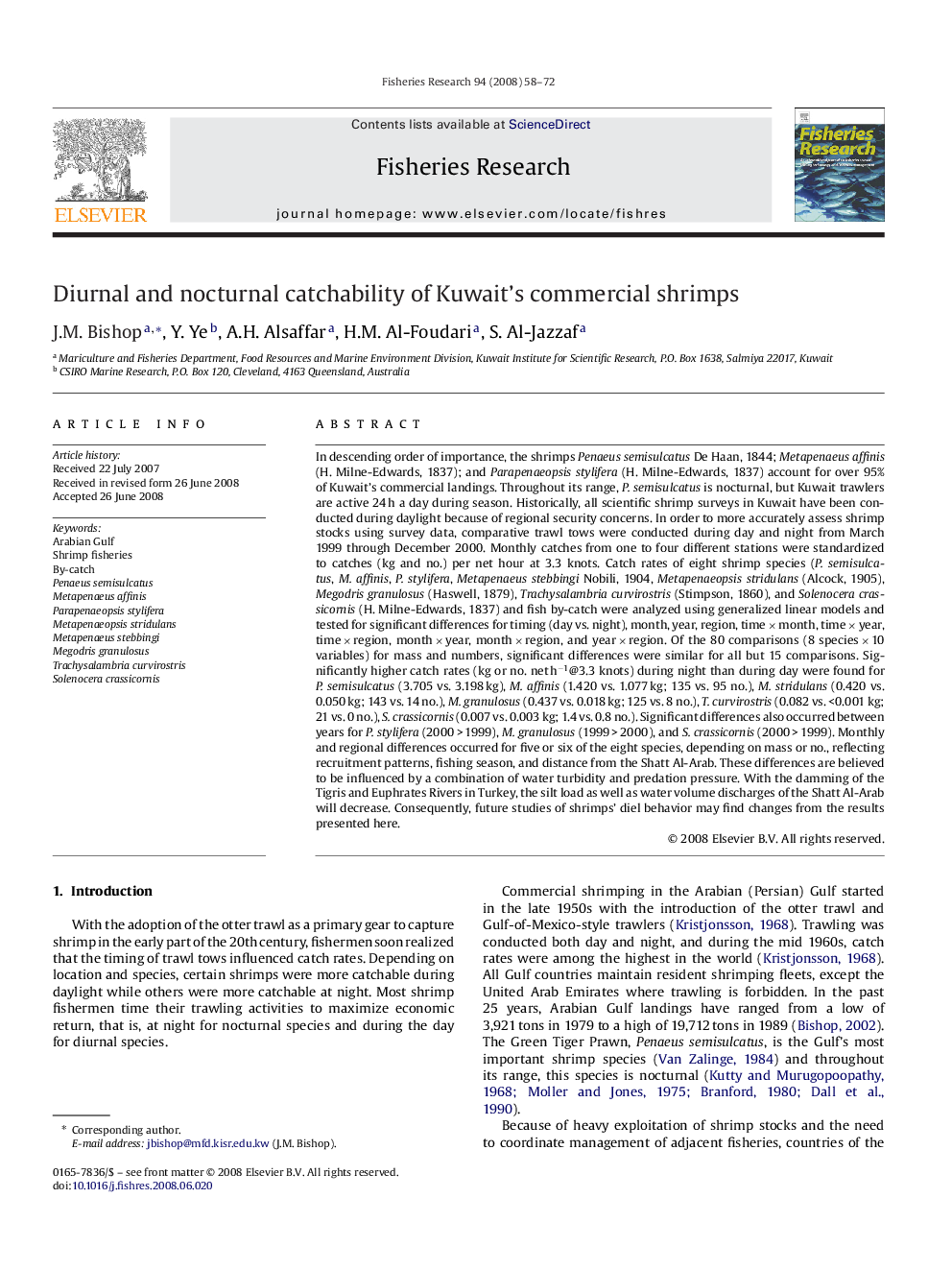| Article ID | Journal | Published Year | Pages | File Type |
|---|---|---|---|---|
| 4544076 | Fisheries Research | 2008 | 15 Pages |
In descending order of importance, the shrimps Penaeus semisulcatus De Haan, 1844; Metapenaeus affinis (H. Milne-Edwards, 1837); and Parapenaeopsis stylifera (H. Milne-Edwards, 1837) account for over 95% of Kuwait's commercial landings. Throughout its range, P. semisulcatus is nocturnal, but Kuwait trawlers are active 24 h a day during season. Historically, all scientific shrimp surveys in Kuwait have been conducted during daylight because of regional security concerns. In order to more accurately assess shrimp stocks using survey data, comparative trawl tows were conducted during day and night from March 1999 through December 2000. Monthly catches from one to four different stations were standardized to catches (kg and no.) per net hour at 3.3 knots. Catch rates of eight shrimp species (P. semisulcatus, M. affinis, P. stylifera, Metapenaeus stebbingi Nobili, 1904, Metapenaeopsis stridulans (Alcock, 1905), Megodris granulosus (Haswell, 1879), Trachysalambria curvirostris (Stimpson, 1860), and Solenocera crassicornis (H. Milne-Edwards, 1837) and fish by-catch were analyzed using generalized linear models and tested for significant differences for timing (day vs. night), month, year, region, time × month, time × year, time × region, month × year, month × region, and year × region. Of the 80 comparisons (8 species × 10 variables) for mass and numbers, significant differences were similar for all but 15 comparisons. Significantly higher catch rates (kg or no. net h−1@3.3 knots) during night than during day were found for P. semisulcatus (3.705 vs. 3.198 kg), M. affinis (1.420 vs. 1.077 kg; 135 vs. 95 no.), M. stridulans (0.420 vs. 0.050 kg; 143 vs. 14 no.), M. granulosus (0.437 vs. 0.018 kg; 125 vs. 8 no.), T. curvirostris (0.082 vs. <0.001 kg; 21 vs. 0 no.), S. crassicornis (0.007 vs. 0.003 kg; 1.4 vs. 0.8 no.). Significant differences also occurred between years for P. stylifera (2000 > 1999), M. granulosus (1999 > 2000), and S. crassicornis (2000 > 1999). Monthly and regional differences occurred for five or six of the eight species, depending on mass or no., reflecting recruitment patterns, fishing season, and distance from the Shatt Al-Arab. These differences are believed to be influenced by a combination of water turbidity and predation pressure. With the damming of the Tigris and Euphrates Rivers in Turkey, the silt load as well as water volume discharges of the Shatt Al-Arab will decrease. Consequently, future studies of shrimps’ diel behavior may find changes from the results presented here.
